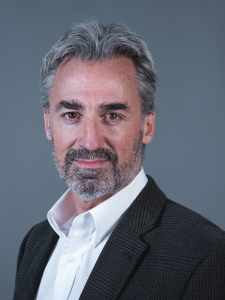Presented By: Michigan Institute for Computational Discovery and Engineering
LANL XPS Seminar – Mark W. Schraad: High-Performance Computing and the Future of Big Science for Department of Energy Applications
Mark W. Schraad Division Leader for Computational Physics, Los Alamos National Laboratory

Los Alamos is the birthplace of computational physics and has been at the forefront of high-performance computing for nearly eight decades. Integrating physics theory and advanced numerical methods in the instantiation of multi-physics software has allowed Los Alamos to address a broad range of science and technology applications. Today, as one of 17 Department of Energy National Laboratories, Los Alamos continues to develop and deploy advanced software in the execution of a complex mission across national security, energy security, and environmental and climate science. As part of that endeavor, the Computational Physics Division at Los Alamos develops and delivers a continuously evolving suite of production software products to design and analyze large-scale integrated physics experiments and to enable the design, assessment, and confident certification of the U.S. nuclear stockpile. These software products are deployed on leading-edge, high-performance computing platforms, such as the Trinity and Crossroads supercomputers at Los Alamos, and the Sierra and El Capitan machines at Lawrence Livermore National Laboratory. With a shifting geopolitical landscape, our software serves a national security mission of ever-increasing importance. Yet, simultaneously, the rapid pace of science and technology change places a premium on agility, with a diversity of computing platforms and architectures coming online, and with AI poised to revolutionize approaches to modern science. Ultimately, an integration of artificial intelligence methodologies with the co-design of software and future computing architectures will allow new levels of physics fidelity, numerical accuracy, and efficiency in time to solution for the most challenging scientific workflows to address a broad spectrum of future, big-science problems.
Bio: Mark W. Schraad earned his Ph.D. in Aerospace Engineering from the University of Michigan and has nearly three decades of research and development experience at Los Alamos National Laboratory. He focused his research career on materials physics, with specialization in structured materials and material instabilities, while also gaining scientific leadership experience across theoretical and computational physics, modeling and simulation, and scientific software development for advanced computing architectures and hardware. Mark has balanced experience across Los Alamos Science, Technology, and Engineering and Weapons Directorates, and across the Laboratory’s basic science and mission application portfolios. In his current position, he serves as Division Leader for Computational Physics within the Weapons Physics Directorate at Los Alamos National Laboratory. In this role, he is responsible for the development and delivery of LANL’s suite of mission-critical modeling and simulation software, which is used in the design, certification, and assessment of the U.S. nuclear stockpile.
Bio: Mark W. Schraad earned his Ph.D. in Aerospace Engineering from the University of Michigan and has nearly three decades of research and development experience at Los Alamos National Laboratory. He focused his research career on materials physics, with specialization in structured materials and material instabilities, while also gaining scientific leadership experience across theoretical and computational physics, modeling and simulation, and scientific software development for advanced computing architectures and hardware. Mark has balanced experience across Los Alamos Science, Technology, and Engineering and Weapons Directorates, and across the Laboratory’s basic science and mission application portfolios. In his current position, he serves as Division Leader for Computational Physics within the Weapons Physics Directorate at Los Alamos National Laboratory. In this role, he is responsible for the development and delivery of LANL’s suite of mission-critical modeling and simulation software, which is used in the design, certification, and assessment of the U.S. nuclear stockpile.